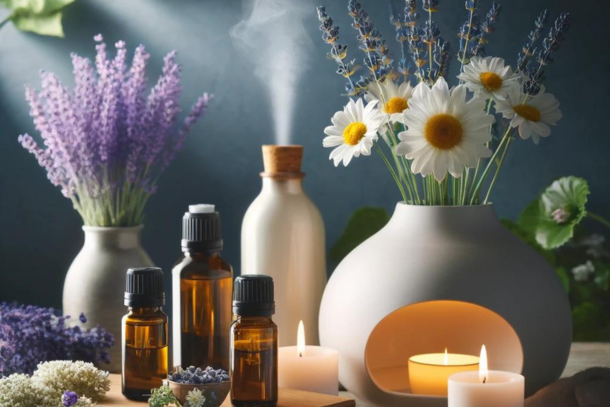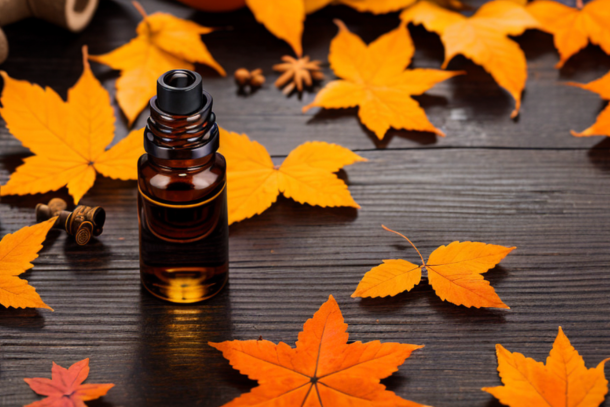Early forms of ASMR and examples of ASMR

While it's not possible for me to provide direct links, I can certainly suggest where you might look for some of the first examples of content that aligns with what we now understand as ASMR. Remember, these are unintentional ASMR experiences as the term "ASMR" wasn't coined until 2007.
Here are ten examples:
Bob Ross' "The Joy of Painting"
A television programme that aired from 1983 to 1994 on PBS in the United States. It was hosted by the titular Bob Ross, an affable, soft-spoken, afro-sporting painter who would complete an entire landscape painting in each half-hour episode. Though the term ASMR (Autonomous Sensory Meridian Response) wasn't coined until many years after the show aired, many viewers have retrospectively identified "The Joy of Painting" as a significant source of unintentional ASMR.
Here's why this programme is considered a prime example of ASMR:
-
Soft-Spoken & Gentle Voice: Bob Ross' calming and gentle voice is one of the major reasons his show is considered ASMR-inducing. His voice has a tranquil, rhythmic quality that many find incredibly soothing.
-
Sound of Paintbrushes: The sounds produced when Ross' paintbrush or palette knife touches the canvas, often referred to as 'brush sounds', are a common ASMR trigger. The methodical and rhythmic sounds of the brush stroking the canvas can create a relaxing and mesmerising experience for the viewer.
-
Positive Affirmations: Bob Ross was well-known for his positive and encouraging commentary. Phrases such as "happy little trees" and "there are no mistakes, just happy accidents" deliver a sense of comfort and positivity, contributing to the calming and uplifting experience that aligns with ASMR.
-
Instructional & Methodical: The step-by-step, instructional nature of the programme is another characteristic that can induce ASMR. Many people report experiencing ASMR while watching someone complete a task in a careful, methodical manner. Bob Ross' methodical approach to painting, where he explains each step and technique in a slow, detailed manner, contributes to the ASMR-like experience.
-
Personal Attention: The show provides a sense of one-to-one interaction, similar to what's experienced in personal attention ASMR videos. Bob Ross speaks to the viewer as if they're the only person in the room, creating a sense of intimacy that can trigger ASMR.
While Bob Ross didn't intentionally aim to create ASMR content – indeed, the term didn't exist during his lifetime – many of his show's elements align with what we understand as ASMR today. His soothing voice, the sound of his paintbrush, and the calming, positive environment he created have made "The Joy of Painting" a beloved source of relaxation and comfort for many.
Mr. Rogers' Neighborhood
"Mr. Rogers' Neighborhood" was an American educational children's television series that ran from 1968 to 2001. It was hosted by Fred Rogers, who became an iconic figure in children's television with his gentle, warm-hearted demeanor. Like "The Joy of Painting," "Mr. Rogers' Neighborhood" is often considered a source of unintentional ASMR, although the concept of ASMR didn't exist during the show's original run.
Here's why "Mr. Rogers' Neighborhood" is considered an example of ASMR:
-
Soft and Slow Speaking Style: One of the most iconic aspects of Fred Rogers was his distinct manner of speaking. He spoke in a slow, calm, and deliberate manner, which many viewers found to be soothing and relaxing. His tone and pace of speech are similar to the soft-spoken and slow-speaking styles often used in ASMR videos.
-
Repetitive Sounds and Actions: The show often included repetitive sounds and actions, such as the routine of Mr. Rogers changing his shoes and sweater at the beginning of each episode. Repetition is a common trigger in ASMR, as it can create a rhythmic, predictable pattern that many find relaxing.
-
Simple and Quiet Atmosphere: "Mr. Rogers' Neighborhood" was not a loud or frenetic show. It was typically quiet and peaceful, with gentle music and a slow pace. This simple, quiet atmosphere is reminiscent of the calm environments often created in ASMR videos.
-
Instructional Content: Fred Rogers often spent time explaining things to his audience, whether it was how crayons are made or how to deal with difficult emotions. This educational, instructional element of the show is similar to the instructional content often found in ASMR videos, which many people find to be relaxing and comforting.
-
Personal Attention: Much like Bob Ross, Fred Rogers spoke to his audience as if he was speaking to each individual viewer personally. This sense of personal attention is a common trigger for ASMR.
While Fred Rogers and his show were not intentionally creating ASMR content, many aspects of "Mr. Rogers' Neighborhood" align with what we understand ASMR to be today. The calming atmosphere, slow pace, and personal attention all combine to create an experience that many viewers find soothing and relaxing, much like ASMR.
PBS Cooking Shows
Cooking shows on the Public Broadcasting Service (PBS) like Julia Child's "The French Chef" and others have often provided unintentional ASMR experiences. While the term ASMR wasn't recognised during their original broadcasts, many elements of these cooking shows align with the triggers often associated with ASMR today.
Here's why PBS cooking shows are considered examples of ASMR:
-
Soft-Spoken Narration: The hosts of these cooking shows, including Julia Child, often had soothing, calm voices. Their measured, relaxed narration during the cooking process is akin to the soft-spoken or whispering voices often heard in ASMR videos.
-
Sounds of Cooking: The sounds associated with cooking - chopping vegetables, sizzling pans, stirring, pouring liquid, and the clinking of utensils - can be incredibly satisfying and soothing to many viewers. These are known as "ambient sounds," which are a common trigger in the ASMR community.
-
Instructional and Methodical Content: Cooking shows are, by nature, instructional. They involve step-by-step guides to prepare a dish, with the host carefully explaining each process. This methodical and focused nature of cooking shows can induce ASMR, as many individuals find watching someone perform a task carefully and methodically to be relaxing.
-
Visual Aesthetics: The visual components of cooking, such as the precise chopping of vegetables or the careful decoration of a cake, can also trigger ASMR. The process of watching ingredients transform into a finished dish can be both visually satisfying and calming.
-
Personal Attention: Although the hosts are not directly interacting with viewers, the one-on-one style presentation of these shows can give a sense of personal attention, a common ASMR trigger.
While these cooking shows were not intentionally created as ASMR content, the blend of soothing narration, ambient cooking sounds, methodical instructions, appealing visuals, and a sense of personal attention align with what is often found in ASMR content today. Therefore, many viewers may experience ASMR-like feelings of relaxation and calmness when watching these shows.
Guided Meditation and Hypnosis Tapes
Guided meditation and hypnosis tapes have been around for many years, offering listeners a means to achieve relaxation, mindfulness, and in some cases, self-improvement. Even before the term ASMR (Autonomous Sensory Meridian Response) was coined, these resources were providing ASMR-like experiences.
Here's why guided meditation and hypnosis tapes serve as examples of ASMR:
-
Soft-Spoken or Whispered Speech: Guided meditation and hypnosis often involve a speaker using a soft, calm, and soothing voice, sometimes even whispering, to guide the listener through the meditation or hypnosis process. This type of speech is one of the most common triggers for ASMR.
-
Slow Pace: In these tapes, the speaker usually talks at a slow, deliberate pace to help listeners relax and focus. This slow pace is similar to that used by many ASMR artists and can trigger the tingling sensation associated with ASMR.
-
Repetitive Sounds: These tapes often contain repetitive sounds, like the speaker's voice, background music, or nature sounds, which can induce a hypnotic state and are known triggers for ASMR.
-
Focused Attention: During guided meditations or hypnosis, the speaker guides the listener's attention towards specific thoughts, visualisations, or areas of their body. This focused attention is similar to the personal attention provided in many ASMR videos and can trigger ASMR.
-
Relaxation and Mindfulness: The primary goal of both guided meditation/hypnosis tapes and ASMR is to induce a state of deep relaxation and mindfulness. Many people use these resources to help manage stress, anxiety, and insomnia.
While guided meditation and hypnosis tapes were not created with the intention of inducing ASMR, their similarities to ASMR content have made them a popular unintentional source of ASMR-like experiences. The calming voices, slow pace, and focused attention all contribute to creating a soothing and relaxing experience that aligns closely with the sensations typically associated with ASMR.
Library Read-aloud and Storytelling
Library read-aloud sessions and storytelling have long been sources of comfort and relaxation for many people, and they are often cited as unintentional ASMR experiences. Here are some reasons why:
-
Soft-spoken Narration: Storytelling, especially in a library setting, often involves a soft-spoken or hushed tone to maintain the quiet atmosphere of the library. This gentle, whispered style of speaking is a common trigger in ASMR.
-
Pacing and Rhythm: Storytellers often employ a slow, rhythmic pace when reading aloud. This cadence can have a soothing, hypnotic effect, similar to ASMR.
-
Turn of Pages: The sound of turning pages can be very relaxing for some people. This subtle, soft sound is often used as an ASMR trigger in many videos.
-
Immersive Stories: The immersive nature of storytelling can induce a sense of relaxation and focus. Being drawn into a good story can distract from outside stressors, a mental state that is often aimed for in ASMR.
-
Personal Attention: A storytelling session, especially in a smaller group, can create a sense of personal attention as if the story is being read just for you. This feeling of personal attention is a significant trigger in ASMR.
-
Repetition: Stories, especially children's stories, often contain repetitive phrases or rhymes. This repetition can have a similar effect to the repetitive sounds and actions used in ASMR videos to induce relaxation.
Although library read-aloud sessions and storytelling weren't specifically designed to trigger ASMR, many of the elements that make them so enjoyable and relaxing mirror the triggers commonly found in ASMR videos. The soft-spoken narration, page-turning sounds, pacing, and personal attention all contribute to the soothing and comforting experience, similar to ASMR.
Salon Experiences
Salon experiences, such as haircuts or manicures, are often considered a significant source of ASMR, or Autonomous Sensory Meridian Response. This is due to a number of factors that align with known ASMR triggers:
-
Personal Attention: One of the main triggers for ASMR is the sensation of personal attention. In a salon setting, the client is the focus of the stylist's or beautician's attention. This one-on-one interaction, which often involves close proximity and a soothing environment, can induce a strong ASMR response in many individuals.
-
Sounds: Salons are filled with a variety of sounds that can trigger ASMR. The snipping of scissors during a haircut, the gentle rustling of a brush through hair, the soft tapping or filing during a manicure, or the bubbling of water during a pedicure - all these sounds can be particularly soothing and trigger ASMR in susceptible individuals.
-
Gentle Touch: The feeling of someone else gently touching your hair or hands can trigger ASMR. It's one of the reasons why simulated scalp massages or hair brushing are common themes in ASMR videos.
-
Slow and Deliberate Movements: Watching someone perform a task with careful, slow, and deliberate movements can induce ASMR. In a salon, observing a stylist skilfully and meticulously cutting hair or a manicurist applying nail polish can trigger this response.
-
Soft-Spoken or Whispered Conversation: Salon professionals often engage in soft-spoken or whispered conversations with their clients to maintain a relaxing atmosphere. This aligns with one of the most common ASMR triggers - soft-spoken or whispered voices.
While salon experiences are not explicitly designed to trigger ASMR, the combination of personal attention, specific sounds, gentle touch, and the overall environment can result in a relaxing experience that aligns with ASMR for many people. It's for this reason that salon roleplays are a popular genre within the ASMR community on platforms like YouTube.
David Attenborough's nature documentaries
Sir David Attenborough's nature documentaries have been a cornerstone of British broadcasting for decades, renowned worldwide for their educational content and stunning visuals. However, they also inadvertently provide a rich source of Autonomous Sensory Meridian Response (ASMR) triggers for many people. Here's why:
-
Narration Style: Sir David Attenborough's voice has a distinct, calming quality that many people find soothing. His slow, gentle, and soft-spoken narrative style shares similarities with intentional ASMR videos, often inducing a sense of relaxation and tranquillity.
-
Sounds of Nature: Attenborough's documentaries feature an array of natural sounds - from the rustling of leaves to the songs of various bird species. These sounds can be very calming and are akin to the type of ambient soundscapes frequently used in ASMR content.
-
Visual ASMR: The slow-paced, high-definition visuals of these documentaries, showcasing beautiful landscapes and animals in their natural habitats, can elicit visual ASMR. This refers to the relaxation and tingling sensations evoked by certain visual stimuli, a common aspect of ASMR experiences.
-
Educational Content: Attenborough's documentaries are highly educational, and the way he presents complex ecological and biological concepts in an easy-to-understand manner can be very soothing. ASMR content often includes instructional or educational elements, as many individuals find learning in a calm, quiet environment to be a trigger for ASMR.
-
Consistency and Predictability: Attenborough's documentaries follow a familiar pattern, with a calm introduction, a steady exploration of a topic, and a reassuring conclusion. This predictable structure can induce relaxation and comfort, similar to how ASMR videos create a safe and predictable environment for the viewer.
While not explicitly designed to trigger ASMR, Sir David Attenborough's nature documentaries contain many elements that align with what we know to be ASMR triggers. His soothing narration, combined with the ambient sounds of nature and visually stunning scenes, can create a deeply calming and immersive viewing experience, much like ASMR content.
Spa and Massage Videos
Spa and massage videos are common examples of ASMR content, even if they were not originally intended as such. These types of videos often encapsulate the main triggers and characteristics of ASMR for several reasons:
-
Personal Attention: ASMR is often triggered by personal attention, and spa and massage videos naturally provide this. The videos often simulate a one-on-one service where the viewer is the recipient of a calming and nurturing experience. This sense of being cared for can induce feelings of relaxation and comfort that align with ASMR.
-
Tactile Sounds: The sounds of various spa treatments, such as the rustle of towels, the drip of water, the squirt of lotions, or the quiet, rhythmic motions of a massage, can all trigger ASMR. These sounds are typically gentle, repetitive, and soothing, which are all characteristics commonly associated with ASMR triggers.
-
Soft-Spoken or Whispered Dialogue: Therapists in spa and massage videos often speak in soft, calming voices, guiding the viewer through the process and explaining what they're doing. This kind of soft-spoken or whispered dialogue is a common trigger for ASMR.
-
Slow and Deliberate Movements: The therapist's slow, careful, and deliberate movements during a massage or spa treatment can also trigger ASMR. Observing someone perform a task in a mindful and concentrated manner is a common ASMR trigger.
-
Relaxing Atmosphere: Spa and massage videos often feature calming music and soothing visuals, such as dimmed lights and peaceful surroundings, which can help induce a state of relaxation akin to ASMR.
It's important to note that while these videos might induce ASMR, they were not necessarily created with the intent to do so. However, their incorporation of personal attention, tactile sounds, gentle dialogue, slow movements, and a peaceful atmosphere aligns with the principles of ASMR, leading to the pleasant, tingling sensation that ASMR is known for.
Whispered Roleplays
Whispered roleplays are a specific category within the ASMR (Autonomous Sensory Meridian Response) genre. ASMR is a relaxing, often sedative sensation that begins on the scalp and moves down the body. It's most commonly triggered by auditory or visual stimuli.
Here's why whispered roleplays are considered a prime example of ASMR:
-
Soft-Spoken or Whispered Voice: The use of soft-spoken or whispered voices is a common trigger for ASMR. In whispered roleplays, the ASMR artist often adopts a gentle, soothing voice which can induce relaxation and the tingling sensation associated with ASMR.
-
Personal Attention: In these roleplays, the ASMR artist often interacts directly with the viewer, as though they are the only person in the room. This one-on-one attention can trigger ASMR, as it recreates the intimate experience of being cared for or attended to.
-
Imaginative Scenarios: The roleplaying aspect creates a storyline that can help the viewer become more immersed in the video, which can enhance the ASMR experience. Scenarios may include, for example, a trip to the spa, a visit to the doctor, or a haircut at the salon.
-
Repetitive Sounds: Many whispered roleplays incorporate repetitive sounds, such as tapping, scratching, or the rustling of fabric. These are common ASMR triggers that can evoke a sense of calm and relaxation.
-
Visual Triggers: In addition to audio triggers, many whispered roleplays also incorporate visual triggers. This can include slow and deliberate hand movements, personal care actions like brushing the camera (as though it were hair), or demonstrating a task.
-
Predictability: Often, whispered roleplays follow a certain routine or pattern, which can contribute to the relaxing experience. The predictability of the scenario can help viewers unwind, as they know what to expect.
Whispered roleplays are a popular format in the ASMR community due to their ability to trigger ASMR responses through multiple stimuli, including soft-spoken or whispered voices, personal attention, and repetitive sounds. They provide an immersive, relaxing experience that can help viewers reduce stress, combat insomnia, and experience the unique tingling sensation associated with ASMR.
Sound Therapy or Sound Healing Videos
Sound therapy or sound healing videos are recordings or performances that use various instruments and natural sounds to promote relaxation and wellbeing. These might include Tibetan singing bowls, gongs, tuning forks, chimes, rain sounds, ocean waves, or even the crackling of a fire. These types of videos have become popular on platforms like YouTube and are often associated with ASMR for several reasons:
-
Pleasant Sounds: ASMR, or Autonomous Sensory Meridian Response, is often triggered by specific auditory stimuli. The sounds used in sound therapy or sound healing videos are often soft, repetitive, and soothing - qualities that align with common ASMR triggers.
-
Relaxation and Meditation: Both ASMR and sound therapy aim to induce states of deep relaxation, and are often used to help reduce stress, anxiety, and insomnia. Many people listen to these types of videos to help them relax, unwind, or fall asleep, much like how ASMR videos are used.
-
Variety of Sounds: Sound therapy and sound healing videos often incorporate a diverse array of sounds, which can trigger ASMR in different ways for different people. For example, the resonant tones of a Tibetan singing bowl might trigger ASMR for one person, while the soft rustling of rain might trigger it for another.
-
Attention to Detail: Many sound therapy videos involve careful, focused attention to creating specific sounds, whether it's striking a singing bowl in a particular way or capturing the sound of rain falling on different surfaces. This meticulous attention to detail is reminiscent of the deliberate, focused actions often featured in ASMR videos.
-
Sense of Presence: Listening to sound therapy videos can create a sense of intimacy and presence as if the listener is right there with the sound source. This feeling of personal attention and proximity is a common trigger for ASMR.
Though not all sound therapy or sound healing videos are intended to trigger ASMR, their shared focus on relaxation, careful attention to sound, and the potential for inducing tingling sensations or a sense of calm make them a natural fit within the world of ASMR.
Hopefully, you will have found this list of early ASMR and how it developed from an almost accidental correlation to the collection it is today, helpful.
Related to this article are the following:
I do hope you have enjoyed this article and hope that you will subscribe to my newsletter so you can get the latest information about all things naturally relaxing.
Stay in touch, join the Naturally Relaxing Newsletter
Newsletter Signup
Post Your Comments
or post as a guest
Be the first to comment.
Latest articles in Relaxation

Capturing the Perfect Sunset: Tips and Techniques

The Benefits of Aromatherapy: Essential Oils for Relaxation

Embracing Calm: Innovative Ways to Relax in the New Year

Autumn Aromatherapy: Essential Oils for Relaxation

Embracing Autumn's Tranquillity: Finding Peace in the UK's Golden Season






